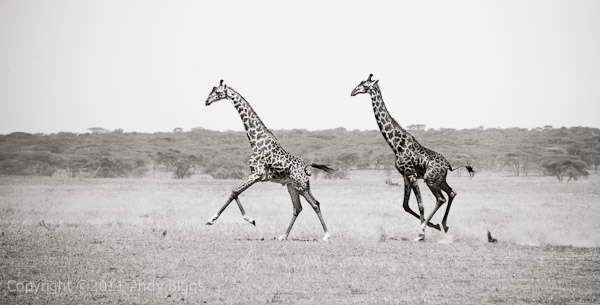I have been back home from Tanzania for a few weeks, and I needed to finish up some family things before I sat down to reflect on my 3 weeks out on safari. Before I get into the overall summary of my two safaris, I wanted to break down some of the gear that was used on the 2nd safari. I wrote about the gear used on the 1st safari in an earlier blog post, so scroll back through the entries to find out what people used on safari #1.
On my second safari we had mostly Canon shooters, and I think I saw about every Canon camera that has been manufactured in the past 3 or 4 years: 1DsMk3, 1DMk4, 1DMk3, 7D, 5DMk2, 5D and a digital Rebel (I forgot which model). On the Nikon side we had 4 shooters, including myself, and we had D3x, D3, D3s, D700 and D300s cameras. We didn’t have any major malfunctions with regards to cameras, thank God.
On the lens front, we had the Canon 100-400mm, 500mm f/4, 300mm f/2.8 and 70-200mm lenses (a few wide angle lenses as well), and on the Nikon front we had 200-400mm, 500mm f/4, 70-200mm f/2.8 (VRI and II), 28-300mm and 70-300mm lenses. Again, no major issues at all with any of the lenses.
After shooting with Canon and Nikon equipment out on safari for the past 10 years, I have to say that there is no inherent upper hand by either Canon or Nikon, and it really does come down to personal choice. I think if money were no object for me I could talk myself into owning both systems. I switched to Nikon about 2 years ago because of the 200-400mm f/4 lens, but now that Canon will have their own flavor of that lens (with an included 1.4x TC, mind you) I would be happy with either system. I am dying to see when SONY will have their 500mm f/4 lens to market, as it was officially announced in 2010. With all of the factory issues going on in Japan I don’t have a foggy clue when we will see it. My hunch is that I will begin to see more SONY equipment on my safaris when that lens starts to ship to customers, and I have no doubt that they are going to play are larger role in the nature photography market as a whole. If I was SONY for a day, I would really want to get that 500mm lens into the hands of working wildlife photographers before it goes to market (wink wink), as imagery from the field to help support the broader marketing plan would be a good move.
OK, on to my overall feeling from my past two safaris. To sum up the 3 weeks, I have to say that these two safaris were some of my best days spent on safari. Ever. We had 4 kills in 24 hours, we had dramatic light, we had views of the enormous migration, great lions, lion cubs, cheetahs, leopard, calving wildebeest / gazelle / zebra, breathtaking scenery, great guides and accommodations. What made me the happiest was watching the smiles on all of my travelers’ faces throughout each day. I think I identify myself more as a teacher than anything else, because I do live my experiences through the eyes of others.
One of the questions I have a difficult time with is: “which safari destination do you like the most?”. The first thing that I think of is how a mother or father feels about their children, and how each is different in so many ways. I feel like Tanzania is my home, as it was my first safari destination. I also love Botswana for the remote Okavango Delta, South Africa for the Sabi Sands and Tswalu, Namibia for the entire desert wilderness, Kenya for its dense wildebeest herds and Rwanda for its Mountain Gorillas. I love it all, and I cannot wait to get back to Africa in July. And then again in September. And then again in February. And so on, and so on.
 Friday, April 1, 2011 at 04:49PM
Friday, April 1, 2011 at 04:49PM 
 Exeter,
Exeter,  Leopards,
Leopards,  Mala Mala,
Mala Mala,  Sabi Sands,
Sabi Sands,  South Africa in
South Africa in  Photo of the Day,
Photo of the Day,  Safaris
Safaris 







